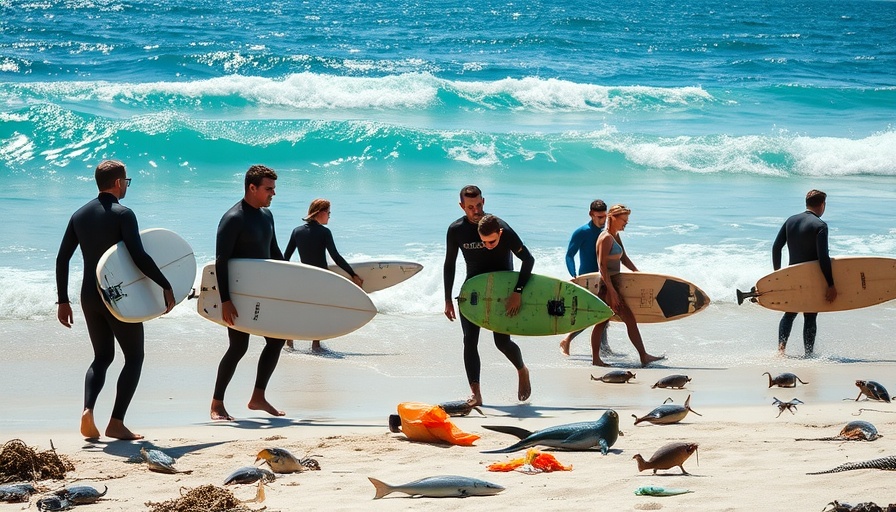
Marine Conservation Takes a Center Stage at the Ballito Pro
The stunning Ballito Pro, held along the scenic shores of KwaZulu-Natal, is much more than just a surfing competition. For its 56th iteration, this event has embraced a bold theme of ocean conservation, channeling attention towards the fragile, yet vital marine ecosystems that face unprecedented threats. This dedication highlights a key dialogue in today's environmental narrative, recognizing the necessity for a collective shift in how we engage with our oceans.
The Urgency of Ocean Conservation
In recent years, the alarming reports on marine degradation have spurred action on a national and global scale. Studies indicate that harmful practices such as overfishing and plastic pollution are wreaking havoc on marine biodiversity. This event serves as a platform to not only spotlight these issues but also promote innovative solutions, reinforcing the interconnectedness of sports, conservation, and community responsibility.
Raising Awareness through Celebration
The Ballito Pro serves as a vibrant venue for eco-awareness campaigns, drawing significant attendance from a diverse array of stakeholders—from surfers and marine biologists to policymakers and environmental activists. Through engaging talks, demonstrations, and sustainable practices promoted throughout the competition, attendees are educated about the vital role of our oceans in climate regulation and the need for effective conservation measures.
Parallel Movements: The Role of Renewable Energy in Ocean Conservation
As the Ballito Pro focuses on safeguarding our oceans, it is essential to draw attention to the broader environmental landscape, particularly the renewable energy sector. The transition towards renewable sources of energy such as solar, wind, and biomass plays a significant role in reducing carbon emissions, thus helping to mitigate climate change effects that threaten marine life. An integrated approach combining marine conservation with clean energy initiatives can pave the way for a sustainable future.
Future Trends: A Collaborative Approach to Conservation
Looking ahead, the need for a holistic strategy encompassing diverse societal sectors cannot be overstated. Stakeholders must explore synergies between marine conservation and other environmental initiatives, such as the Just Energy Transition Framework. Collaboration among government entities, non-profits, and the private sector can yield impactful results in fostering marine health while simultaneously addressing energy security and climate resilience.
Local Perspectives: The Role of Communities in Conservation
Resistance to more entrenched environmental practices can often be found within communities directly affected by such changes. Education and inclusivity in decision-making processes are crucial. Local communities should not only be recipients of conservation initiatives but active participants in creating sustainable paths forward that respect their cultures and traditional practices.
The Call to Action: Toward Sustainable Practices
The insights drawn from the Ballito Pro urge professionals across sectors to embrace sustainability not merely as a buzzword but as a call to action. Whether it is through adopting energy-efficient practices, investing in renewable energy technologies, or participating in circular economy initiatives, each individual and organization has a pivotal role to play in securing marine ecosystems for future generations.
 Add Row
Add Row  Add
Add 




Write A Comment